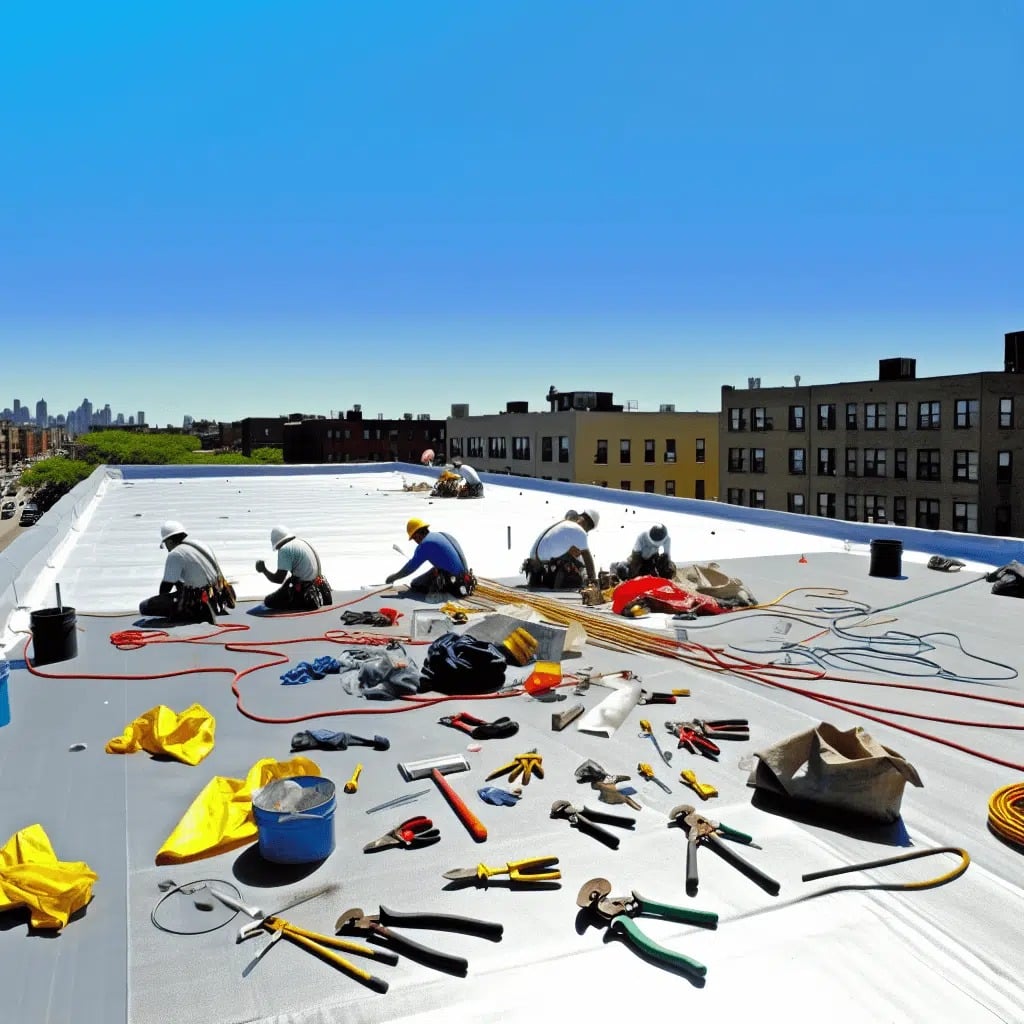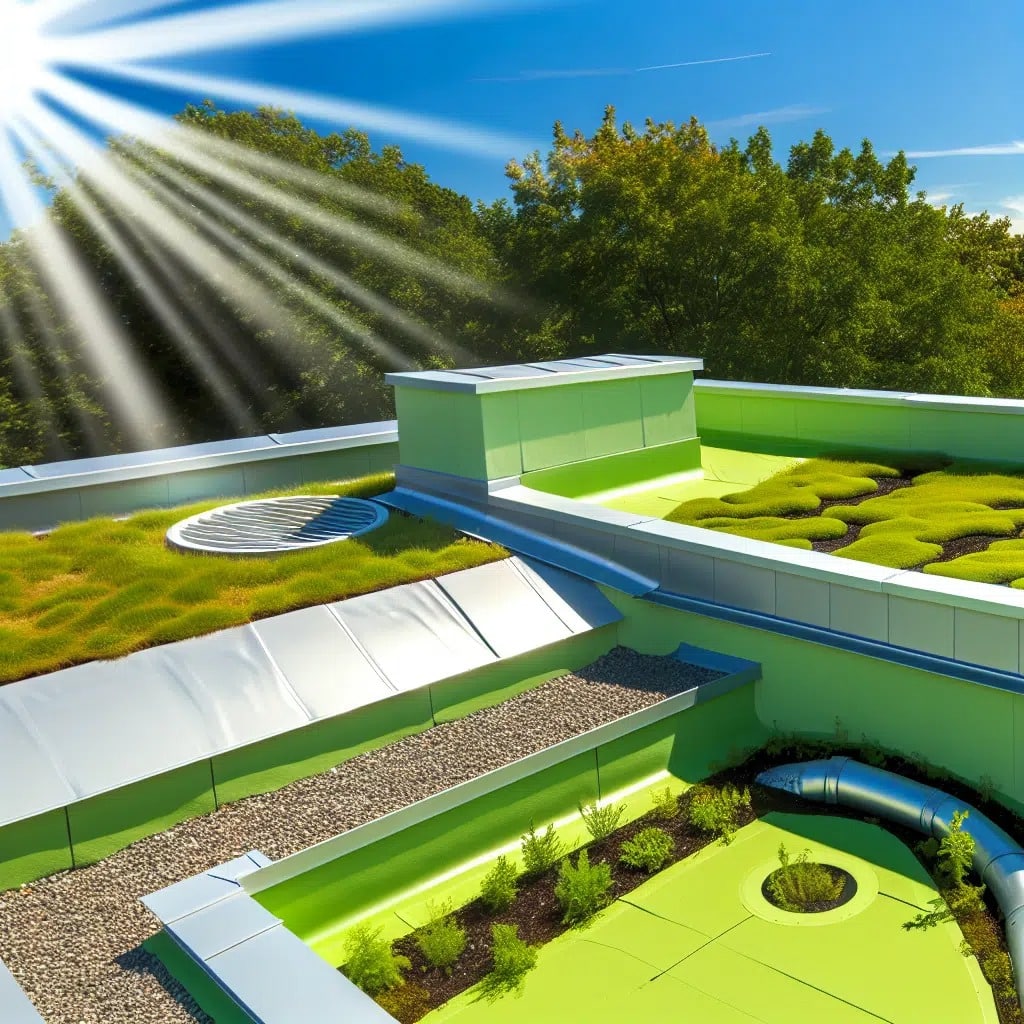Understanding Your Roof’s First Line of Defense
Your home’s roof is more than just an aesthetic feature; it is a shield against the elements, a guardian of your sanctuary. The choice of shingle material is not one to be taken lightly, as it can mean the difference between a leaky aftermath and a secure homestead. Roof shingles are the unsung heroes, enduring the brunt of nature’s assaults – blistering sun, raging storms, and howling winds – all while keeping your home dry and comfortable. As April showers begin to hint at the coming of Spring in Kingston, RI, it’s crucial to understand the materials that form this protective layer. In navigating this decision, the benefits of knowledge cannot be overstressed, often avoiding costly, frequent repairs.
The question, “what are roof shingles made of,” may seem benign, but the answer holds the key to your home’s long-term protection. Shingles made of various materials – asphalt, wood, metal, or slate – offer different benefits and challenges. Selecting the ideal shingle goes beyond color and cost; it delves into the realm of durability, environmental adaptation, and your personal comfort. Understanding that Class A fire-resistance ratings signify the highest protection quality against external fires can guide you toward safer choices. Knowing that modern materials combine lightness and resilience might sway your decision towards what works best for Kingston’s climate variances.
Roof shingles don’t merely cover; they are layered to create an impermeable barrier, crafted ingeniously to withstand torrential downpours frequent this season. To illustrate this, consider how proper installation affects longevity and performance, particularly when facing winds that can gust to over 60 miles per hour. Thanks to advancements in roofing technology, the effect has been not only to enhance roof lifespan but to provide homeowners with peace of mind. It’s not just a roof; it’s a long-term investment into the fabric that is your home. As we unpack the various materials shingles are made of, one thing becomes clear: your house deserves the best defense against the variety of weather that defines our beautiful but often tempestuous New England seasons.
Diving Deeper into Roof Shingle Materials
As we delve into the various materials that comprise roof shingles, it becomes apparent that each type offers unique advantages. Asphalt shingles, for instance, are prized for their cost-effectiveness and versatility, often designed to suit a range of architectural styles. They’re imbued with granules providing varying degrees of UV protection, a critical factor in roof preservation. Wood shingles offer a natural aesthetic that can seamlessly integrate with Kingston’s lush, verdant landscapes. However, it’s essential to understand the level of maintenance these materials demand to remain resilient against Rhode Island’s dynamic weather patterns.
Metal roofing shingles represent the pinnacle of durability and longevity. They stand as a testament to modern engineering’s capacity for creating weather-resistant, fireproof, and sustainable roofing solutions. If your concern leans towards environmental impact, a visit to green roof systems may enlighten your understanding of eco-friendly roofing options. Slate, on the other hand, boasts a timeless elegance and can endure for decades, if not centuries, outshining other materials in terms of lifespan and classic beauty. Yet, the installation and material costs might influence your choice, balancing the scales between initial investment and long-term value.
Installing these materials isn’t simply about placing tiles or panels atop your house. It’s about creating a synergy between craftsmanship and material science, ensuring that every shingle aligns precisely, seals tightly, and provides uniform protection. The technique used in nailing down shingles can greatly affect their ability to weather the storms endemic to New England. Correct nailing, as advised by leading roof experts, can prevent issues such as lifting or curling, which could compromise the roof’s integrity. Rinaldi Roofing understands the nuances of these intricate details, offering services that guarantee a roof not only built to last but also crafted with the finesse of a seasoned artisan’s touch.
Ensuring Roof Longevity and Performance
When it comes to selecting the right shingle materials for your Kingston home, the dialogue extends beyond aesthetics and budget. It’s a multifaceted decision that reflects your commitment to the home’s longevity and performance. You must weigh the climatic requirements—the punishing winters and humid summers characteristic of New England—against each material’s capacity to cope. Choosing a roof with a significant life expectancy of two to three decades could mean fewer replacements and an overarching reduced cost of ownership. By making informed choices now, homeowners can ensure their roofs are equipped to endure the vagaries of time and weather.
Expert installation practices are the linchpin in the functionality of your shingle roof. This intricate process, managed by licensed professionals, guarantees that each shingle is optimally positioned and secured to stand up against high-velocity winds that sweep through Rhode Island. A strong adhesion is especially pertinent during the spring, a time when nature tests the mettle of your home’s exterior defenses. For those seeking top-tier residential roofing, exploring Rhode Island residential roofing solutions could be the first step towards a resilient and lasting roof architecture. The value of craftsmanship cannot be overstated, as it plays a pivotal role in safeguarding your abode against potential roofing challenges.
Above all, choosing the right partner for constructing and maintaining your roof is paramount to the trust you place in your roof’s efficacy. Rinaldi Roofing’s rich tapestry of experience in the industry stands as a testament to their commitment to providing only the most sturdy, reliable, and stylistically fitting solutions for the community. A house seldom feels like a true home without the security of a well-maintained roof, a philosophy deeply ingrained in the ethos of Rinaldi Roofing. Every homeowner’s relationship with their roofing service should be built on a foundation of clear communication and assured trust, paving the way for a lifetime of comfort and protection. As your journey nears its end, remember, the question ‘what are roof shingles made of’ signifies not just a quest for knowledge, but the beginning of a wiser approach to safeguarding your cherished home.
Insights From The Experts: Shingle Roof Wisdom
Tip 1:
To prevent leaks in roof valleys, ensure the installation of a properly designed flashing system that complements the shingles. This creates a seamless barrier against water ingress, channeling it safely away.
Tip 2:
Proper water drainage is vital for shingle roof longevity. Regularly clear your gutters and downspouts from debris to prevent water accumulation, which could lead to leaks and water damage over time.
Tip 3:
When dealing with low-slope roofs, a high-quality underlayment is crucial. It acts as an additional layer of protection against moisture and should be carefully selected based on the slope and local climate conditions.
Tip 4:
Applying the correct nailing technique is essential for shingle stability. Nails should be driven straight, flush with the shingle surface, and in the designated nailing area to prevent future wind damage or lifting.
Tip 5:
In cold weather, proper shingle installation is key to ensure adhesive activation. Pre-warming the shingles can help in achieving the right flexibility and adhesion, preventing problems down the line due to improper sealing.
Expert Answers to Your Roof Shingle Queries
What is the best method for preventing leaks at roof valleys?
To prevent valley leaks, ensure a metal valley flashing is properly installed beneath the shingles, as it provides an unimpeded pathway for water to flow off the roof.
How can you ensure proper water drainage off a shingle roof?
Proper water drainage can be maintained by keeping gutters and downspouts clear of debris and ensuring that the shingle layout directs water towards these channels.
Is special underlayment necessary for low-slope shingle roofs?
Yes, low-slope roofs benefit from a specialized waterproof underlayment that provides an extra layer of protection against potential water penetration.
What are the recommended practices for nailing roof shingles?
Roof shingles should be nailed in the designated nailing area with a minimum of four nails per shingle, spaced evenly, to resist wind uplift and prevent buckling.
How should shingles be installed in colder temperatures to ensure proper adhesion?
In colder temperatures, shingles should be hand-sealed with roofing cement to ensure proper adhesion until the sun naturally activates the self-seal strip.



